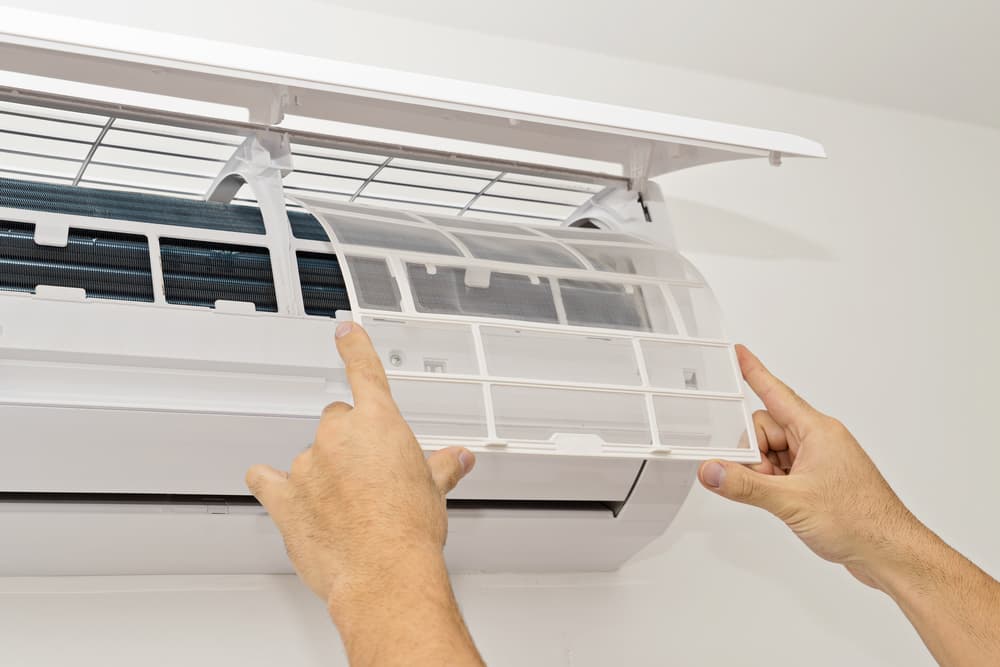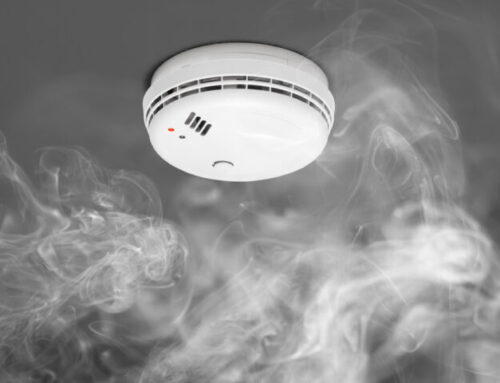
The current meteoric rise in public concern and interest regarding air quality and healthy environments has created an opportunity for the industry to market and promote a myriad of diverse products and services. Everything from scented candles and snake oils to ozone generators and air fresheners are being advertised as the magical air quality answer to all our healthy home needs.
The trouble is, they’re not!
Home is Where the Heart – and Most of Your Time – is
On average, Canadians spend 80 percent of our time indoors, and a great deal of that time consists of being in your own home. Controlling the air quality conditions of our workplaces can be difficult, especially if you don’t get a say in how things are done, but at home? That’s completely different! Improving your environment in your own personal oasis simply requires a basic understanding of how your home actually works.
Everything is Connected
Universally, homes behave as an integrated system – in other words, what happens in the basement affects the air quality upstairs. The definition of a healthy home is not about simply having more, but rather about living with less: Less humidity and air moisture content, fewer airborne chemicals and noxious fumes, and fewer odours that can disturb air quality. You should also look to minimize the presence of particulates and dust. Reducing air quality concerns in our home means living with fewer irritants that our bodies’ defense systems must otherwise attempt to address.
The “Wheelbarrow” Perspective
Let’s have fun with an example here: Imagine if we were born with a “wheelbarrow” of environmental sensitivities. Throughout our lives, each person would load their wheelbarrow at a different pace, representing the environmental exposure level. Some folks would have the capacity to fill a larger wheelbarrow, which indicates dose-response. Due to past environmental exposure, others may not be so fortunate and have trouble handling the environmental burden – this is known as multiple chemical sensitivity. The fundamental similarity between all “wheelbarrows” is the universal benefit of the load reduction – if we make it so more people don’t have to reach their peak limit in terms of sensitivity, they can live healthier, more stress-free and enjoyable lives! That’s why we must seize every opportunity to reduce instances of poor air quality and environmental irritants in our homes – again, where we spend much of our time while alive – in an effort to reduce or outright empty the load. With that, our capacity to handle unforeseen air quality issues can increase, making us hardier and more resilient as individuals in terms of immune system effectiveness.
If we are to adapt the “less load in the wheelbarrow” philosophy to our own everyday home lives, we need to embrace some lifestyle changes that promote such healthy environments. We, therefore, need to be able to recognize the conditions that generate poor air quality, and we must take appropriate steps to improve them. Recognizing these conditions indicating poor air quality is the first step to improving your everyday health.
Identifying Different Types of Poor Air Quality Triggers
Air quality concerns can be divided into two main categories: Chemical and biological. Chemical air quality issues are introduced into your environment via “off-gassing” – when fumes are emitted by manufactured products and materials. You typically experience this sort of thing when sleeping on a new mattress, though those “bed-in-a-box” products truly are the most dangerous as they are akin to sleeping on a fluffy cake of chemicals and highly combustible materials. You can also encounter off-gassing with cleaners, construction materials, solvents, dry-cleaning, air fresheners, products of combustion, and more.
Biological contaminants are different – they’re generated within the building environment, and usually not from an outside source. Examples include skin cells and fragments, pet dander, dust mites, pollen, and other allergens, bacterial growth, mold, and airborne infectious viruses that travel freely through natural, human-dispersed aerosols. These types of contaminants thrive in moist, damp environments, by controlling the relative humidity in the home, the growth of some of these culprits can be minimized or even eradicated.
Four Strategies
There are four strategies that need to be carried out in order to achieve a healthier home: Isolation, separation, ventilation, and filtration. The daily application of these strategies will reduce exposure to airborne contaminants, minimize the strain on each person’s “wheelbarrow” of environmental sensitivities, and create a healthier, happier environment.
Isolation
This strategy is where the term source control applies. In other words, if we can identify a situation in the home contributing to poor air quality – a cracked foundation, for instance – the isolation strategy requires the complete removal of that condition. So, if we’re storing a box containing moldy books, discard them. If we have a leaking pipe adding unwanted moisture to our environment, get a professional to repair it.
Separation
Separation involves moving triggers of unhealthy air quality in a manner so they can do no harm. This strategy may include the storage of foul-smelling items in a sealed container. It helps to contain and separate off-gassing or odorous items that can trigger unwanted allergic or health-related reactions. Items such as solvents, cleaners and paint cans can be stored in a sealed plastic container for future use. Another example of separation is the use of waterproof membranes within the foundation of your home, which are utilized to prevent moisture and dampness from seeping in through exterior walls.
Ventilation
This strategy is pretty self-explanatory but is it ever important! Proper ventilation involves an exchange of interior air with fresh exterior air, diluting higher concentrations of airborne contaminants and subsequent moisture generated inside the living environment. Imagine your home as a sealed glass aquarium, and you inhabit it. Inside this aquarium is a constant disturbance of very small particles we breathe – otherwise known as respirable suspended particulates (RSP). Let’s say we created an opening on one side of the aquarium and let fresh, clean air in. Then, perhaps we were to place an exhaust fan on the other side of the aquarium that blows air out. The result is that we would eventually dilute and exhaust the higher levels of RSP found inside the aquarium – ironically, it’s a process very similar to how a real aquarium filter works in removing toxins and helping to keep PH in check. This is how we should perceive the benefits and necessity of a sound ventilation strategy in our own homes. In fact, there are three types of effective ventilation, which we’ll cover a little later on in this post.
Filtration
The fourth and final air quality improvement strategy is one of the most crucial steps to take. Filtration involves mechanically forcing household air through a high-quality filter system, such as those in modern furnaces. Alternatively, you can also achieve this with a filter media device such as one built into a dehumidifier, though the method via the furnace is the most common. Forced air furnace systems are an ideal way to filter household air and toxins out on a continuous basis. Switch the fan operation from “Auto” to “On,” and have the system’s fan run continuously with a quality filter installed – it’s pretty surprising how effective this approach can be! If for some reason you do not have a forced-air furnace, a standalone high-efficiency particulate arrestor (HEPA) filter can be equally effective.
Types of Ventilation
The first is really straightforward: Just open the windows to let fresh air in! This is an excellent, easy method of achieving air dilution and exchange. During cooler months, however, leaving windows open is no longer a reasonable option – that’s where the second means of ventilation comes in: Relying on the exhaust only approach to an air exchange system. For example, range hoods over stoves and bathroom fans mechanically push air from inside the home out, creating less air in the home and developing a slight negative pressure within the living environment. Fresh air is then reintroduced to the home through cracks around windows, doors, the foundation, and the ceiling. This type of exhaust-only ventilation is the most common solution. New homes are designed to meet building code standards that govern the size of exhaust-only devices when installing as the primary means of ventilation. The third alternative is an integrated system of balanced, filtered air in and out; this helps to minimize changes in air pressure. These systems can be installed with heat recovery technology (HRV) to save warm air from being wasted – particularly useful in the dead of winter!
Direct Benefits
Having fresh, clean air, free of toxins doesn’t just mean generally “feeling healthier” – in fact, there are a large number of benefits associated with such a change in your home! First off, you’ll be able to strengthen your immune system more easily, as mentioned before with our wheelbarrow perspective. In addition, however, the spread of infectious airborne bacteria will be reduced, achieved through proper humidity control that limits the reach of microbe-rich aerosols. Plus, it’ll be easier to stay focused and remain productive with fewer triggers of sensitivity-related reactions such as itching, hives or breathing issues – great for those who have the luxury of working from home or children trying to get their homework done! On top of all this, you’ll have more energy and can even benefit from improved mental health by actually feeling better – it’s really amazing just what the human mind can do.
We know that this long, long list of recommendations can seem overwhelming, but consider the benefits of being so cautious and proactive. Once you have embraced new, healthy home lifestyle changes, you’ll notice the difference in everyday living at home in no time. Efforts should be made to reduce your environmental exposure load by ventilating your home at every convenient opportunity – and yes, even in winter.
So, to recap: Isolate moisture and remove the sources you are aware of. Separate moisture and off-gassing chemical-based products. Ventilate and dilute the air at every opportunity. Filter or “scrub” the home’s air continuously. The result? A much healthier, happier and more beneficial environment. Your home will feel like home! For further details, please consult the Canada Mortgage and Housing Corporation (CMHC) library, either in-person or on their website.
(Adapted from previous version published in Healthwise Ottawa, fall 2007, updated for fall 2019)






